Summer Term 2024

As a year group, we used different ways to raise money for Water Aid as part of our last term topic on 'The Long Walk to Freedom'. We dressed up in African flag colours or as African animals and also had a bake sale where lots of people could buy the buns and cakes.
Project 1 - Local Heroes
Our first project is called ‘Local Heroes’. Within this topic we will be focussing on people in Bradford and nearby who are heroes and have made our world a better place.
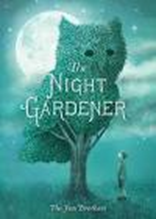
We will be using the book ‘The Night Gardener’ as our stimulus to writing. This is where someone tries to look after their environment to make their world a better place.
Week 1
Project - history
This week we have been focusing on our Local Hero – Margar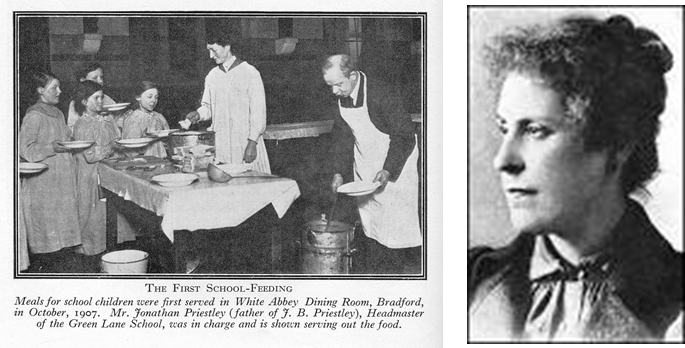 et McMillan. She fought for free school meals so that children could have a hot meal at school. These are the facts that we learnt:
et McMillan. She fought for free school meals so that children could have a hot meal at school. These are the facts that we learnt:
“She was born in New York and then moved to Scotland when she was 4 years old.” – Sam
She stood up for children who didn’t have the money for a school meal.” – Betsy
“It took 10 years for other people to agree with her.” – Harry
“Before Maragaret McMillan, children only got hard bread, a banana and a tiny bit of milk topped up with water for their school dinner.” – Penny
“She was a hero because she wanted everyone to have a hot meal, so it could be fair.” – Lola
"The first school that had free school meals was at Green Lane Primary, which is only 15 minutes away from us!" - Jude
Week 2
Project - History
In our project this week we continued to discover the history of 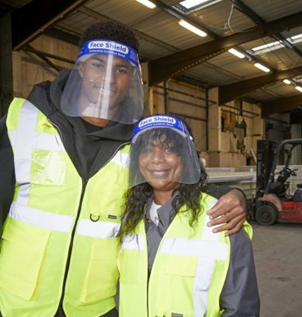 world changers and how some people have made a huge impact on our lives because of their influence in the past.
world changers and how some people have made a huge impact on our lives because of their influence in the past.
We discovered that Marcus Rashford was not just an amazing footballer but that he also had a rough childhood and that has made him who he is today. We discussed how Marcus showed courage to fight for what he knew was right, but he was also spreading love to families who didn't have much.
"Marcus showed courage when writing a letter to the MP's to ask for free school meals to keep going even when some children were at home because of covid." - Jude
"He spread joy when giving out the meals because some people might have been worried they wouldn't get anything and now they are happy that their children are fed." - Reba
"He showed people love when supporting free school meals and lots of courage as he did it so that other children didn't have to go through the same thing that he did when he didn't have food or where his mum couldn't eat because they couldn't afford it." - Arlo
Religious Education
Within our RE we have introduced our new topic of belonging and what does it mean to belong. We shared our love and joy about what groups we belonged to. These included: brownies, family, football, dance, churches and many others. We discussed how some people belong to similar groups and some are very different and these make us ‘who we are’.
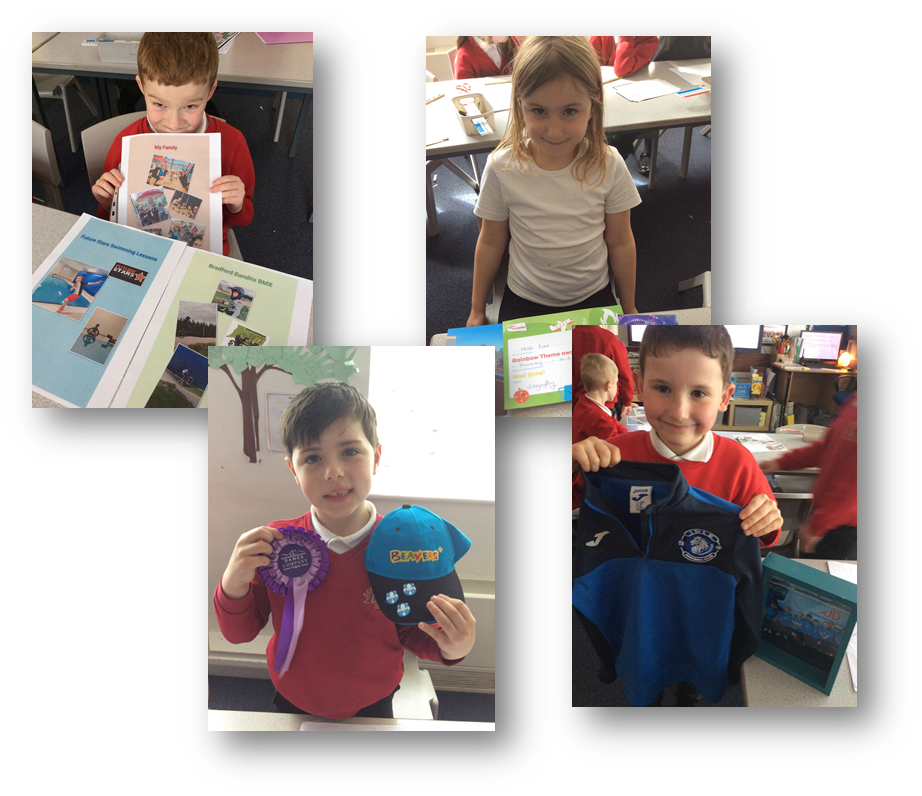
Project - ART
In our first lesson of art, we started by researching an artist from o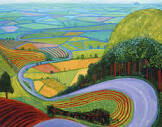 ur local area as part of our local hero topic. We introduced David Hockney and his impact on Bradford. We then explored his art and the pieces he made. We decided we wanted our inspiration to be Garrowby Hill as it was in Yorkshire, which links with our local surrounding area. Next week we will be exploring his techniques and producing our own interpretation of Garrowby Hill.
ur local area as part of our local hero topic. We introduced David Hockney and his impact on Bradford. We then explored his art and the pieces he made. We decided we wanted our inspiration to be Garrowby Hill as it was in Yorkshire, which links with our local surrounding area. Next week we will be exploring his techniques and producing our own interpretation of Garrowby Hill.
“David Hockney was part of the pop art movement because he thought other painters' work was boring, and he wanted to be brighter.” - Aria
"David Hockney is spreading love with his bright and wonderful paintings, and it makes people feel joyful when they see colour instead of the other paintings that didn't have much colour on." - Louis
Week 3
Religious Education
Continuing on with our new topic of belonging, we revisited the story of the lost sheep and conducted a Godly class to represent this. We then discussed the meaning of this story and what things might mean to belong.
“Even though the sheep was lost, God kept him safe and helped him get back home.” – Stanley
“This could link to us. For example, if we feel lost and don’t know what to do, we know that God will always be with us and helping us to make the right decision.” – Lola

Project - ART
In our second lesson of art, we showed courage when practising David's techniques as these were quite a challenge for some people. We then followed instructions and drew our outline in pencil. This formed a guide for our own Garrowby Hill.
“I showed courage by not giving up because it was very tricky when following the instructions because there were so many!” – Olivia
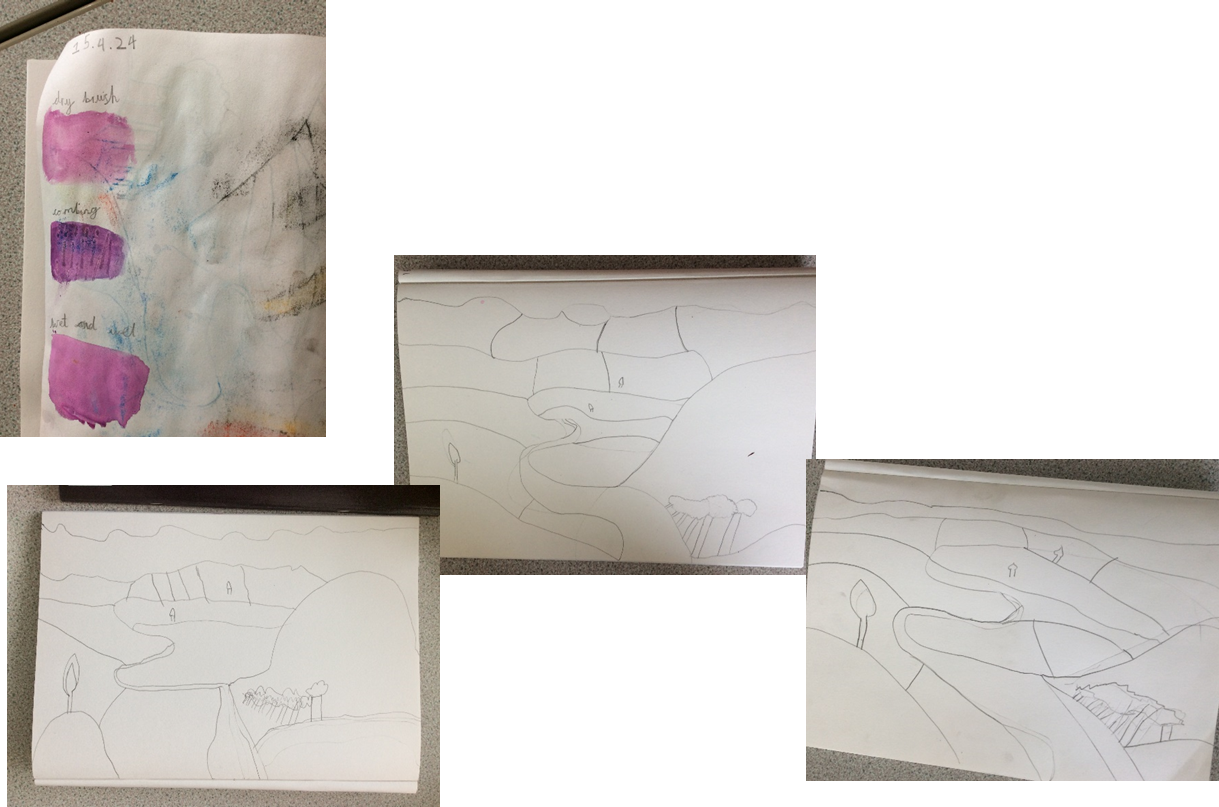
Our final lesson was creating our own masterpieces. We shared love and joy as we produced our painting, sharing our techniques and skills with each other.

Have a look at our fantastic artwork from our amazing class! The final touches of black pen on the outline made the painting pop.
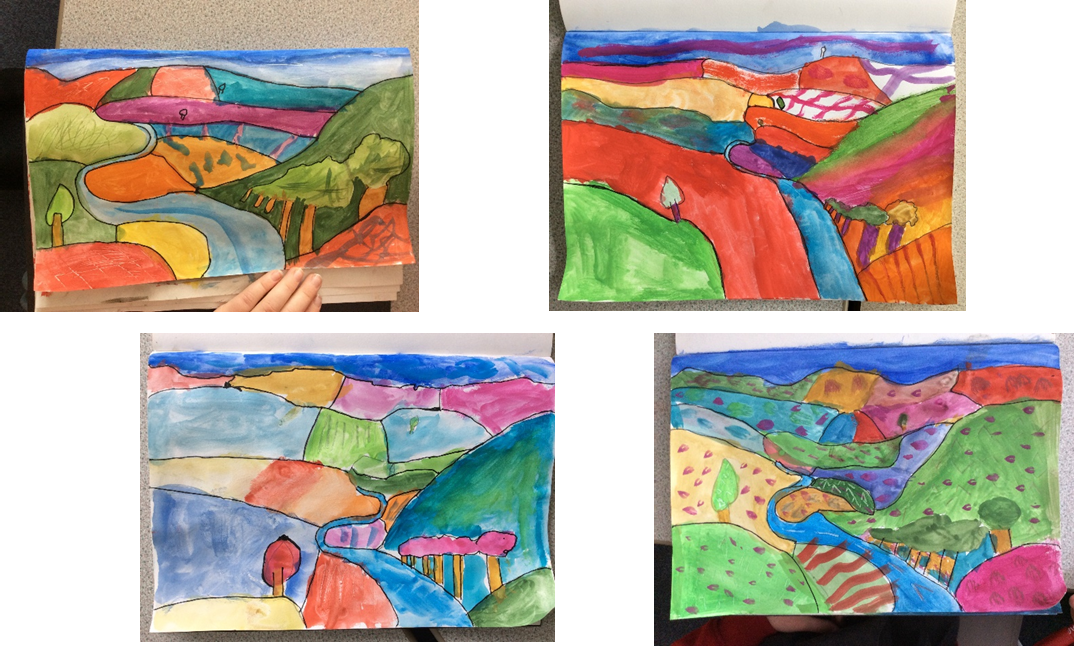
Project 2 - Local Habitats
Our second project is called ‘Local Habitats’. Within this topic we will explore who lives in our local environment, including the mini-beasts all around us.

We will be using the book ‘Tidy’ as our stimulus for writing. This is where an animal tries to look after its environment to make its world a better place. This will then guide our project work across the curriculum where we will be exploring who lives in our environment and what our environment has to keep plants and animals alive.
Week 4
Project – Science
We started by exploring our amazing school grounds, which we are very lucky to have, to identify the home to lots of animals. We drew our own habitat map to share the features of the habitat and identify animals we saw and thought might live there. We discussed features of different habitats and decided this must be an urban habitat because it is surrounded by houses where people live.

"It is like a woodland habitat because there are lots of trees and fallen leaves, we have lots of open grass space too, which makes it more like a woodland habitat." - Ottilie
"It is an urban habitat because people live around it, and you can still have trees and bushes in an urban habitat."- Archie
"Foxes, birds, squirrels and rats live in an urban habitat like our school playground." - Adam
We then discussed that within any habitat there are smaller places for minibeasts to live and these are called microhabitats.
We explored our grounds again and became scientists to find and observe how many minibeasts and microhabitats we could spot. We drew the microhabitats and the minibeasts that were living in them.

Have a look at some of the minibeasts we saw.

As a class, we shared some features of microhabitats and why these may work for some minibeasts and not others.
“Soil is a microhabitat because minibeasts like worms and ants live in them. The soil can be damp or moist and that’s why worms like it to keep their skin slimy.” – Molly
“The ants are on the bark and the dry ground, maybe they prefer hard dry microhabitats.” - Maya
We then collected and recorded the data of how many minibeasts we saw in different microhabitats. We then discussed which was the most popular minibeast in each and which was the least seen minibeast and why this may have been.

“I didn’t see many worms, but that might be because they prefer damp or moist microhabitats, so they may be under the soil because the sun is drying out the ground.” – Penny
Week 4
Project – science
We continued our project work exploring animals and humans, where we categorised things which were living, dead and never alive. We discussed how the living section would mean things that are growing or moving, which meant we weren’t always able to put these in the category.
“Flowers are alive but if we pick them then they will be dead because they won’t grow any more.” – Jude
We therefore focused on the dead and never alive sections.
“The orange peel is dead because it isn’t getting water and nutrients from the bush it was on, but one time it was on a bush, and it would have grown from a small seed, so it was alive.” – Sam
“My water bottle was never alive because it is plastic and plastic is man-made.” – Caleb
“I found a wrapper and that was plastic, so it was never alive.” – Jake
Somebody put a cardigan into the never alive section, so we discussed this as a class. Most thought this was never alive because it’s not made from wool which comes from a sheep. However, Miss Gravestock shocked us all when she told us that some jumpers are made from cotton which comes from a plant, so technically the jumper was once alive in plant form!

Computing
Our current project in computing is creating digital music. This includes us exploring music made by others using a computer and then creating our own. Today we explored chrome music lab where we designed our own music using a rhythm app and a drawing app. We started by creating a rhythm and instructing different instruments to play.
We then explored how our drawings could become a rhythm. Some of the children even tried to write their name to see what rhythm their name made.

Week 5
Art whole school project
Lesson 1 we researched the artist – Quentin Blake. We practised drawing some of our own characters in his style.
Quentin Blake. We practised drawing some of our own characters in his style.
 Lesson 2 we practised our different techniques to show different lines, focusing on thin lines. We used charcoal for this.
Lesson 2 we practised our different techniques to show different lines, focusing on thin lines. We used charcoal for this.
 Lesson 3 – we continued to explore the use of different materials to show texture. We used charcoal and oil pastels.
Lesson 3 – we continued to explore the use of different materials to show texture. We used charcoal and oil pastels.

Lesson 4 – we practised our sketches of our flower in our sketchbooks before producing our final product.

Week 6
PE
In our PE this half-term we have been developing our orienteering skills, understanding how to read a map and follow instructions. Today we used our skills developed to follow instructions to different plot points and collect letters that correspond to numbers to form a word. This meant following clues to first find the points and then writing the letter into the correct corresponding number.

"We have found the word. It is local habitats! I loved this PE lesson!" - Olivia and Sonny
"I really enjoyed this PE lesson, I had fun orienteering around the playground." - Lola

